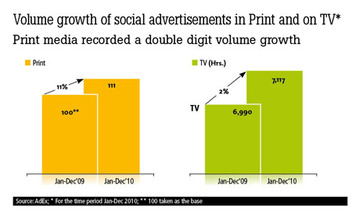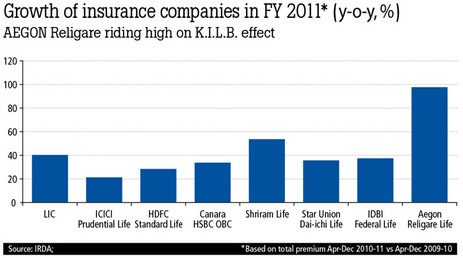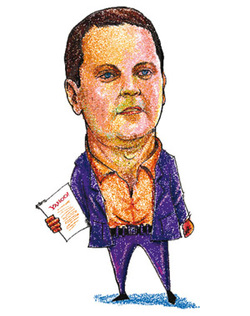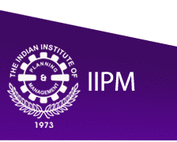Brio is Honda’s first venture into the crowded Indian small car segment. And Inaba seems determined to pull it off well.As an automobile manufacturer, Honda has always enjoyed a top-of-the-mind recall the world over, and India is no exception. The reason is simple – the unmatched features that the company delivers to its customers through its high-quality products. But, now that it has stood up against rivals like Toyota, Ford, Volkswagen, et al, by launching the Brio in the small car segment, it has a big task in hand – of overpowering it rivals while keeping the brand image intact. Well, Seki Inaba, Director – Marketing, Honda SIEL Cars India is the man in charge. Inaba, who took over from Tatsuya Natsume in April this year, has been associated with Honda for more than two decades and brings with him the excellent sales & marketing experience with an in depth understanding of consumer trends in different markets including CIS, Middle East and Africa. But the question remains: Can he deliver what Honda’s top management is expecting from one of their most ambitious projects in India – Brio? While the first episode with the Jazz has nothing spectacular to talk about, the aggressive pricing of the Brio gives Inaba the right weapon to fight its rivals in an already crowded Indian hatchback market. In an exclusive conversation with Pawan Chabra, Inaba discusses the market strategy for the Brio going forward. Honda has a reputation for manufacturing technologically advanced vehicles. Do you think it will help the company gain high initial volumes for Brio?With products like City, Civic, Accord, et al, in its portfolio Honda already enjoys a very strong connect with its Indian consumers. However, with the existing product line-up, Honda was only present in the top 20% of the Indian market, but Brio will take us straight where the maximum action is. It was one of the most-awaited products of 2011 and we are confident that we will be able to sell enough numbers of the Brio in the Indian market. Now that the product is out in the market, we have expanded our presence in the segment which accounts for the highest volumes in the Indian passenger car market. In fact, this is one of the main reasons why we have kept such an aggressive price for this hatchback in the Indian market. We expect India to be one of the largest markets for automobiles (globally) in the future and Brio is certainly the first step towards a shifting growth trajectory for us in India. So, what kind of media mix will you be using to promote Brio and what results are you expecting?We will be launching a 360-degree campaign for Brio. It will have a healthy mix of all popular media vehicles. The idea is to make consumers aware of the product. The focus is very clear as far as Brio is concerned – we expect to gain a lot of consumers through Brio. Although I cannot share the exact figures that we are looking at, roughly we will be producing around 10,000 units of the product within this year. With over 80% localisation of the product (soon expected to reach 90%), we expect Brio to join City when it comes to the best selling model for Honda SIEL in India. For more articles, Click on IIPM ArticleSource : IIPM Editorial, 2011. An Initiative of IIPM, Malay Chaudhuri and Arindam chaudhuri ( Renowned Management Guru and Economist). For More IIPM Info, Visit below mentioned IIPM articles.IIPM ranked No 1 B-School in India
domain-b.com : IIPM ranked ahead of IIMs
IIPM: Management Education India
Prof. Rajita Chaudhuri's WebsiteIIPM in sync with the best of the business world.......Arindam Chaudhuri on Internet.....Arindam Chaudhuri: We need Hazare's leadershipProfessor Arindam Chaudhuri - A Man For The Society....IIPM: Indian Institute of Planning and ManagementPlanman Technologies--------------------------------------------------------------------------------------------------------------------------
In a Cluttered Market, where Real Estate Buyers have to be Drawn into a Purchase, Riding The Social Media bus is Extremely Important. Coming up with a solid action plan can become challenging when you have to evaluate what works, what doesn’t, and what to maximise to get the best results in the real estate business. Creating a powerful, consistent brand presence allows you to step out from the ordinary and differentiate yourself from your competitors. Brands are under increasing pressure to perform. Yes. Tougher demand for greater returns on marketing spend, structural changes in the marketplace, tougher regulatory constraints and increasing count of competitive brands also force companies to build the right positioning. In today’s cluttered real estate marketing environment, consumers are trained to tune-out messages that don’t seem to address their real and unfulfilled wants. In other words, if your message doesn’t clearly deliver a solution to exactly what your prospect is looking for – if it doesn’t slot into an open position in your prospect’s mind – then your efforts and money and time will go down the drain. Real estate companies have realised that the best positioning strategy to communicate to break the cluttered real estate market is to touch down on the selling propositions that your projects possess, keeping in mind the overall brand image. Supreme focus should be on developing a communication plan that develops & reinstalls trust & faith of the consumer in our brand. “Positioning is not what you do to a product. Positioning is what you do to the mind of the prospect. That is, you position the product in the mind of the prospect” – keeping this thought in mind, it is very important to understand how you want your brand to be positioned. All companies need to have a strong corporate positioning strategy besides various product positioning strategies. Social media marketing is the new way to promote a brand. With all the social media available, it has became a lot easier to advertise/promote your brand. Using social media for business-to-business marketing can be integral to promoting the brand and forging industry contacts. Research also reinforces the value of PR. PR is a vital component for building brand value, maintaining brand vitality, and establishing brand credibility. Most of the companies establish a strong bond with their customers through branding. Each company creates a brand identity that connects it with its target audience through a shared ideology or system of beliefs. And for the brands to have longevity, the companies need to consistently deliver on the promises made through the brand. One has to understand the value of establishing a cohesive, consistent and unique company identity that portrays what the company has to offer. For more articles, Click on IIPM ArticleSource : IIPM Editorial, 2011. An Initiative of IIPM, Malay Chaudhuri and Arindam chaudhuri ( Renowned Management Guru and Economist). For More IIPM Info, Visit below mentioned IIPM articles.IIPM ranked No 1 B-School in India
domain-b.com : IIPM ranked ahead of IIMs
IIPM: Management Education India
Prof. Rajita Chaudhuri's WebsiteIIPM in sync with the best of the business world.......Arindam Chaudhuri on Internet.....Arindam Chaudhuri: We need Hazare's leadershipProfessor Arindam Chaudhuri - A Man For The Society....IIPM: Indian Institute of Planning and ManagementPlanman Technologies--------------------------------------------------------------------------------------------------------------------------
Click Asia MasterClasses — the training and conference on Affiliate Marketing and PPC — was recently held in Delhi. The enriching sessions were conducted by the leading experts in the field, who graced the occasion by sharing their experiences, tips and opportunities with the delegates from around the world. Click Asia MasterClasses aims to address the training needs of digital marketers in India with the latest digital tools and techniques. Speakers who attended the Click Asia MasterClasses included Eric J. Gerritsen, Vice President of Neverblue (Canada), Kapil Juneja, CEO of Walla Media (USA), Sandeep Amar, Head, Marketing of Times Internet Limited, Vivek Bhargava, Managing Director of Communicate2, Sunil Abraham, CEO of Leadcola & Clove Network (Canada), Chris Clark and Chief Marketing Officer of Walla Media (USA). The event was supported by media bigwigs Indiatimes.com, Afaqs, eVentures, Adgully, TradeBriefs, Alootechie, the DMAI, and yours truly, 4PsB&M! For more articles, Click on IIPM ArticleSource : IIPM Editorial, 2011. An Initiative of IIPM, Malay Chaudhuri and Arindam chaudhuri ( Renowned Management Guru and Economist). For More IIPM Info, Visit below mentioned IIPM articles.IIPM ranked No 1 B-School in India
domain-b.com : IIPM ranked ahead of IIMs
IIPM: Management Education India
Prof. Rajita Chaudhuri's WebsiteIIPM in sync with the best of the business world.......Arindam Chaudhuri on Internet.....Arindam Chaudhuri: We need Hazare's leadershipProfessor Arindam Chaudhuri - A Man For The Society....IIPM: Indian Institute of Planning and ManagementPlanman Technologies--------------------------------------------------------------------------------------------------------------------------
Euro RSCG’s Ashok Lalla believes in delivering TO The Consumer Whatever He Wants, Whenever He Wants it and Wherever He Is. And that’s what, as per him, is going to really drive Media Consumption in IndiaHe leads the Digital business arm of Euro RSCG in India, and focuses on delivering next-gen digital marketing solutions to an array of leading global and Indian brands. He also sits on the Euro RSCG APAC Digital Council. In a career spanning over 18 years, both at the client as well as the agency side, he has marketed brands that cut across the spectrum from one cent candies to million dollar hotel stays. In an exclusive interaction with 4Ps B&M, Ashok Lalla, President – Digital, Euro RSCG talks about the key elements that are driving media consumption in the country. Excerpts: From a digital perspective, do you think 3G is really over-rated when it comes to influencing media consumption in India?As a matter of fact, I do. Because 3G is not just about 3G, it’s about the quality of the content you provide, its value and its context. For instance, 3G has scored big time in retail marketing in Singapore and Japan, where people are using a phone which is a GPS device. You know where your consumer is, you know his location, and using that bit of information you provide him with engaging content. That’s how you set one brand apart from the other and in the end make it meaningful for the consumer. That’s where you are talking about relevance & context, and really tailoring it differently every time for a same guy, rather than creating 130 seconds or 60 seconds commercial. Till that’s done in India, I think it’s overrated. Further, there are fewer devices and connections in India. I think the big play in India will only come when 4G happens. In fact, India is going to skip a generation really, just like it skipped the generation of pagers and went straight onto using mobiles, unlike America which had a complete phase of pagers before it leaped on to mobile communication. Similarly, I think we are going to skip a generation with 3G as well, though people seem to be a little rattled when I say that, but, time will tell. What, according to you, are the trends that are shaping media consumption in India?It essentially has to be the quality and relevance of content. If it is in tandem with what I want and if it’s in context with when I want it, how I want it, that would really draw people to shape that content. So you can go ahead and create a lot of apps, you can create a lot of content on, say, DTH, but is it relevant? There’s too much of overkill of information where today everyone can be an author. So precisely the barriers are not there any more. In order to keep the people glued to your content, the quality needs to improve and the meaning needs to improve a lot more. Also, I feel that the ‘www’ phenomenon, popularly known as the world wide web, is dead already. The future of content and media consumption is defined by ‘whatever, whenever, and wherever’. That’s the new ‘www’ according to me. So you give the person whatever he wants, whenever he wants it and wherever he is. That’s what’s going to really drive media consumption. It’s not about building by destination and worrying about driving people to it. The idea is to have many islands of connectivity and that’s what will trigger media consumption. Even large portals are realising it, you can sign into YouTube, blogger through gmail which wasn’t possible earlier. Now there’s an aggregation and de-intermediation at the same time. Thus, at one point you are aggregating the content and at the same time you are putting it out in a fragmented form asking the consumer to take his pick. It’s almost like a Lego Block model of media consumption. Do you think there’s any media platform that is either dead or is about to go extinct?Interestingly, a lot of media convergence is happening nowadays. So when I am watching a TV video online, am I really consuming TV content or should it be considered a web content? Because of this convergence, it’s getting a bit hazy. What is www? Or for that matter, what is a video blog? Is it a video or is it a text? If it’s a video, you might say that text is dead. Also at one level Twitter, which is by and large text communication, brings out videos as well. So, it would be safe to say that what is really dead is a uni-dimensional media delivery. If a radio channel is not able to integrate, it will be dead. I think unidimensional media delivery is a recipe for disaster. Every medium needs to be a lot more integrated and interactive. And if you can have it somehow user generated as well, even better. You can actually mark them into different levels, so there is integration at the first level, then the next level is interaction, the third is user generated, more like the citizen journalism activity initiated by TV channels. For more articles, Click on IIPM ArticleSource : IIPM Editorial, 2011. An Initiative of IIPM, Malay Chaudhuri and Arindam chaudhuri ( Renowned Management Guru and Economist). For More IIPM Info, Visit below mentioned IIPM articles.IIPM ranked No 1 B-School in India
domain-b.com : IIPM ranked ahead of IIMs
IIPM: Management Education India
Prof. Rajita Chaudhuri's WebsiteIIPM in sync with the best of the business world.......Arindam Chaudhuri on Internet.....Arindam Chaudhuri: We need Hazare's leadershipProfessor Arindam Chaudhuri - A Man For The Society....IIPM: Indian Institute of Planning and Management--------------------------------------------------------------------------------------------------------------------------
Rajiv Bhalla, Country Head, NEC, explains how The Multibillion Dollar Behemoth, Despite being a late Entrant into one of The Most Potential markets in The World, is going to call The Shots in The Near Future.With a history that’s more than a hundred years old, revenues of $42.7 billion (3,583.1 billion yen for FY 2010) and a powerful base of 140,000 employees, NEC is now up for a big leap in the global IT arena. But, what is most interesting from India’s point of view is the fact that despite being involved in many critical and strategic transactions with India since 1956 in the large infrastructure and communication project space (setting up the first 2Ghz microwave communication system, a satellite earth station and an international gateway exchange for overseas communication service), the Japanese corporation opened its Indian arm in 2006 only. In an exclusive interaction with 4Ps B&M, Rajiv Bhalla explains the logic in NEC’s late entry and why he believes that their go-to-market tactic can change the game even now. Despite maintaining a significant relationship with India since 1956, NEC opened its Indian arm only in 2006. Any specific reasons for the same?I agree that we’ve been a laggard and a late entrant when it came to opening our Indian arm. But clearly, there has been a change in the NEC Corporations’ views and we’ve realised that to grow, we cannot depend only on advanced economies. Thus, we now have a greater focus on emerging markets like India, China, Brazil and Russia. As a matter of fact, we’ve been registering growth at double and triple digits on a year-on-year basis since the time we set foot on the Indian soil as a subsidiary. Last year, we established our biometric centre of excellence in Bangalore because we aim to leverage the Indian workforce not only to improve NEC’s internal efficiencies, but also to use it as a service entity for other business opportunities that we foresee. We have also set up a retail centre of excellence in Bangalore, which is working towards creating customised retail solutions for large format and specialty retail. So, there’s a huge amount of investment with a vivid focus that NEC has over India. I can’t really answer why NEC came to India so late, but I’ll say better late than never. Now, how do you plan to reach out to your target audience and cover up the lost time?We have two large divisions with us – one is the carrier network division that essentially focuses on the telecom service providers’ space, and the IT services division that consists of various IT products and solutions and services aimed at the enterprise and mid market segment. From the strategic perspective, NEC is a B2B marketing company. We clearly focus on strategic high growth verticals like education, healthcare, hospitality, public safety and security. We hope to have products that help us differentiate in the identified segments. We clearly believe that mass communication strategies for a company should have a targeted consumer focused approach. So all our marketing strategies in the segment are essentially aimed at direct marketing, customer focused events, workshops, publishing of case studies, and certain online initiatives which are keywords search based. We run an integrated marketing campaign that comprises of online activities, PR, testimonial based advertisement, events, road shows et al. In the four years that NEC has been in India, we have successfully positioned NEC as a holistic solution provider for the enterprise segment that helps the enterprise customers to improve their operational efficiencies while bringing down their total cost of operation. You talk about a lot of customer focused events. But you rarely sponsor any of them. What is the logic?A mass event attracts multiple brands to sponsor, and thus the exclusivity of your presence gets diluted upon other brands sharing the advertising space. Our aim in India is to have maximum returns on every rupee spent. Hence, rather than sponsoring events, we customise and host the events ourselves for our target audience, wherein with complete share of mind, we connect to our customers and convince them on our product and solution expertise in a conducive environment. For more articles, Click on IIPM ArticleSource : IIPM Editorial, 2011. An Initiative of IIPM, Malay Chaudhuri and Arindam chaudhuri ( Renowned Management Guru and Economist). For More IIPM Info, Visit below mentioned IIPM articles.IIPM ranked No 1 B-School in India
domain-b.com : IIPM ranked ahead of IIMs
IIPM: Management Education India
Prof. Rajita Chaudhuri's WebsiteIIPM in sync with the best of the business world.......Arindam Chaudhuri on Internet.....Arindam Chaudhuri: We need Hazare's leadershipProfessor Arindam Chaudhuri - A Man For The Society....IIPM: Indian Institute of Planning and Management--------------------------------------------------------------------------------------------------------------------------
 While The Government has for long Relied on using on-Ground Intervention Exercises To Persuade People to Improve Their Wellbeing, of late the use of commercial Media to Publicise a Social Message has also come in Vogue. Mirroring that intent, even India inc. Has Jumped into The Fray Of Social Advertising, Albeit With a Commercial Intent. 4Ps B&M analyses The Year 2010 Social AD trends.
The ‘Socialists’ inc
Ever since Theodre Levitt wrote Marketing Myopia in 1960, marketing has undergone a paradigm shift. And to the extreme. An increasing number of firms in the 2005-10 period went insane, attempting to market a social cause than the product itself. Print, as evidenced, benefited the maximum in terms of growth but TV in sheer volumes of social advertising was way ahead. Aircel’s Save the Tigers, Tata Tea’s Jaago Re and other campaigns, each managed a great brand recall, but whether the campaign worked to increase sales, is still an open question. 2011 has seen a drop in such social message investments by India Inc.
Drink tea, Better Society, duh!
Perhaps inspired by Gerhart Wiebe’s question, “Why can’t you sell brotherhood and rational thinking like you sell soap?” companies throughout the 2010 year invested both in print and television to promote one or the other social message. If one were to analyse whether the trend was increasing or decreasing, no such specific movement can be seen, as the investments in social advertisement have increased for a few months and then decreased and then increased again. Still, March 2010 saw the TV medium getting the maximum social ads, while May and October 2010 evidenced the maximum print social ads.
In India’s Ad History, how many Businesses and start-ups have been powered by Women Bosses? and how have They Fared? 4Ps B&M’s Consulting Editor Monojit Lahiri does a speed-profile Snapshot of a handful of such Women and Focuses on the latest edition of a firm called Curry-Nation headed by The Ubiquitous priti nair to prove The Obvious!
 Let’s face it guys, it really is a man’s world. And although women are just as smart and effective – and proving this conjecture true everyday across diverse male-dominated domains – it’s still, mostly, men who call the shots. Sad (or not!), it is but true. Otherwise, wouldn’t there be at least a handful of the gentler sex heading some of the top 20 ad agencies? Mercifully, there have been some glorious – brave, gifted, dynamic, fearless – exceptions who have cut loose to script their very own success stories. Sure, there was the gorgeous Nargis Wadia in the late sixties and seventies, but it was Elsie Nanji (the founding partner of Ambience, rated as one of the hottest creative shops in its very first year of existence!) who set the ball rolling around two decades ago. Trained by the redoubtable Mohammed (Enterprise) Khan, Nanji has been a multiple-award winner at most of the revered shows, both at home and abroad. Presently, she is a Managing Partner of a design cell of Publicis Worldwide, Red Lion and today has established it to be one of the top five design brand outfits in the country! Next up is Preeti Vyas, Chairperson of Vyas Gianetti Creative (VGC). Widely hailed as one of the country’s foremost creative minds, Vyas launched VGC in 1997 with the single-minded focus of transforming a sluggish market into an exciting aesthetic space through “strategic design and communication solutions”. Ranked among India’s greatest brand builders, with branches at New Delhi and Bengaluru, VGC continues to demonstrate amazing entrepreneurial chutzpah and be a true game-changer for their clients. And so on to Priti Nair! Short, dusky, flashing cute dimples and distracting nose-ring, don’t ever begin to be deceived by the looks of this tough, feisty, fearless, gifted, much-awarded and acclaimed professional powered with creative artillery and ammunition designed to blow you away! Priti’s entrepreneurial venture, Curry Nation, has literally spiced up the ad-nation since its launch. But was it the woman in her which led on to her firm being called what it is? The dimpled smile appears along with her very special take: “Weird as it may sound, it has to do with my passionate patriotism and passion for food! We are a multi-layered and multi-textured entity, as a nation. Same with our food. So, shouldn’t that, seamlessly, translate into our advertising DNA? Hence, the name!” Priti apparently wasn’t too worried about breaking away from a hi-profile designation in a globally respected agency (Managing Partner, BBH) – and that was because “after two decades in the business, I think I had done time and owed it to myself to do the kind of work I wanted to do, the kind of people I wanted to team up with, the kind of clients and brands I wanted to associate with, the size and direction I wanted to go with – on my own terms.” For more articles, Click on IIPM ArticleSource : IIPM Editorial, 2011. An Initiative of IIPM, Malay Chaudhuri and Arindam chaudhuri ( Renowned Management Guru and Economist). For More IIPM Info, Visit below mentioned IIPM articles.IIPM ranked No 1 B-School in India
domain-b.com : IIPM ranked ahead of IIMs
IIPM: Management Education India
Prof. Rajita Chaudhuri's WebsiteIIPM in sync with the best of the business world.......Arindam Chaudhuri on Internet.....Arindam Chaudhuri: We need Hazare's leadershipProfessor Arindam Chaudhuri - A Man For The Society....IIPM: Indian Institute of Planning and Management--------------------------------------------------------------------------------------------------------------------------
Movies Now has Created Ripples in The English Movie Channel space with its HD Offering in a Fairly Short Span of Time. Can it Sustain this Iconic Rise?
 Even discounting the impact of translations, Hollywood has gained immense popularity in certain parts of India. Indeed, English movie channels have played a key role in bringing about that transformation. But unlike the upheaval that the box office typically goes through every week, the English movie channel space in India has seen fairly little flux in terms of competitive positions for quite a while. Star Movies has been heading the genre since years; with HBO at a comfortable number 2 and Sony Pix at number 3. Expat entrant WB and the others contenders like Zee Studio, UTV World Movies and Lumiere have remained specific to their content and positioning, by not catering to the mass market. The competition has drastically increased for local broadcasters with multinationals tying up with local broadcasters to cater to niche categories, which mostly directs towards the core audience of 15-35 SEC AB M/F. Ad rates have seen a constant increase over the years, with major revenue earnings for broadcasters. 2010 has also been a virtual walkover for the English movie channel category, with Star Movies ruling the roost (refer to ‘Wars on the English front’, 4Ps Volume 5 Issue -13, July 2-15, 2010). However, the streak recently broke in January, when the TAM research report revealed that a new entrant has suddenly topped the segment within 4 weeks of its launch and dethroned Star Movies. This challenger is Movies Now, a baby of the Times Group, which, in a short span of time, is already showing the muscle to change the game in the English movie channel genre. Movies Now was launched in the second week of December by Times Television Networks, with the clear USP of ‘Hollywood in HD’. Sunil Lulla, MD & CEO, Times Television Network, comments, “Movies Now challenges the status quo of the category to ensure the audience the best of entertainment. With its first of a kind, state-of-the-art HD Broadcast facility. Movies Now will furnish upscale Indian audiences with clearer, crisper picture quality, superlative sound quality and a wider viewing experience.” Movies Now is the 4th offering from the Times Group after Times Now, ET NOW, & ZOOM, which cater to multiple audiences in Australia, Maldives, Kenya, Nepal, Tanzania & Uganda, besides India. Company sources say that the average TSV on the channel is 58 minutes, while the closest competition records an average TSV of 32 minutes. The average GRP of Movies Now is 26 points, which is the highest in the category. (Source: TAM Media Research, TG: CS 15-34 AB, Period: 4 weeks average of week 52, 2010-week 03, 2011; Markets: Top 8 Metros). For more articles, Click on IIPM ArticleSource : IIPM Editorial, 2011. An Initiative of IIPM, Malay Chaudhuri and Arindam chaudhuri ( Renowned Management Guru and Economist). For More IIPM Info, Visit below mentioned IIPM articles.IIPM ranked No 1 B-School in India
domain-b.com : IIPM ranked ahead of IIMs
IIPM: Management Education India
Prof. Rajita Chaudhuri's WebsiteIIPM in sync with the best of the business world.......Arindam Chaudhuri on Internet.....Arindam Chaudhuri: We need Hazare's leadershipProfessor Arindam Chaudhuri - A Man For The Society....IIPM: Indian Institute of Planning and Management--------------------------------------------------------------------------------------------------------------------------
With The Financial Calender coming to an end, late Kate Tax Assessee are busy Dumping their Hard Earned Money, just to save tax. But more than them, it’s The Insurers who are busy Making Themselves Visible and audible in Order to sell as many Policies as they can, on The Pretext of “Save TAX”
 Close on the heels of financial safety and security, the insurance sector – which as a business model has captured the opportunity arising out of the innate need of the human mind to hedge against any unforeseen situation – has of late been focusing on a new brand and category trigger. The Indian insurance companies with their focus on caring in the physical and emotional realm is no exception. The focus and the trigger arises because despite the fact that insurance is a natural solution, a number of people still view it from the prism of an investment for the purpose of tax saving rather than for its primary benefit – security. That’s why insurance is still never bought but sold in India. And the sales pitch is all the more audible in the last quarter of every financial year, when the idiot box is bombarded with advertisements and new product launches are reported everyday almost unfailingly in the pink papers. As a matter of fact, for a long time, the entire cycle in terms of advertising, marketing, promotions or otherwise is more skewed towards the January-March period.
Though a few of the insurance companies plan their ad expenditure for the entire year, for a number of others, the last quarter of the fiscal accounts for close to 75-80% of their total ad spend. But then, in a way, their act is justified as approximately 40-45% of the sales of insurance policies take place during these three months. However, while this has been a normal play for the past few years, the dynamics of the game is expected to change this time dramatically for the addition of another (unexpected) spender – the Insurance Regulatory and Development Authority (IRDA). Under the provisions of the Insurance Awareness Campaign for the period December 2009 to March 2011, the regulator was allocated Rs.150 million, and till December, it spent only 15% of the amount. And given the fact that the provision has to be accounted for after the completion of the financial year 2010-11, it is likely that we may see some more of public awareness advertisements from IRDA. This means that the common investors will now get a parallel bombardment about making an informed purchase decision, and this will dictate the tone for the battle between insurers to grab a larger share of the 3-month sales pie.
 Nevertheless, the insurance companies, which apparently feel that it is the high brand recall that matters the most in the insurance space, have already adjusted to the situation and are ready to roll. Thus, to grab the consumers attention, the efforts of the insurers have gone up in all directions from catchy taglines to pouring millions in marketing initiatives. Moreover, with the emergence of new players such as IDBI Federal, Apollo Munich, Max Bupa, Aegon Religare, Canara HSBC OBC, First India Life Insurance, Future Generali et al, high decibel campaigns in the recent past have definitely increased. Insurers are now trying to reach out to each and every customer segment – from young children to the pensionable adult – via television, print, internet, radio, outdoor, digital signage and below the line activities. In fact, to ensure their presence through every conceivable medium (duly taking into the profile of their target audience), insurers are not shying from the social media sites to market and advertise their products. So be it the hoardings, which ask people to pause and think about health insurance from the stable of Apollo Munich or Future Generali’s ‘Insurance Week’, which aimed at reminding people the critical need of re-evaluating their insurance needs and highlighted the simple ways of buying insurance; insurers are leaving no stone unturned to woo the consumers. Given the fact that only 14% of the Indian population is covered by health insurance of any form, the efforts of Apollo Munich really serves the purpose of uncomplicating the investors’ dilemma. Future Generali, for its part, used the dismal statistics of insurance – insurance penetration (4.6% in life and 0.61% in non-life), and insurance density – where the scenario is all the more alarming as compared to countries like UK and Japan (where insurance density is 73 and 65 times higher than that in India). And hence their advertising and marketing strategy was oriented at breaking down the barriers of apathy and procrastination that affect the people when it comes to insurance planning. The creative thought behind the entire week-long campaign based on the philosophy of ‘Karta’ and ‘Mukti’, with the intent of making small tangible differences in the way Indian consumers perceive insurance, certainly helped Future Generali in casting a brand leadership statement. Deepak Sood, MD & CEO, Future Generali feels that by virtue of the campaign and a new product – Future Generali Select Insurance Plan – they have given a “touch and feel factor to insurance making it even more interesting and involving for the customer.” For more articles, Click on IIPM Article
Source : IIPM Editorial, 2011. An Initiative of IIPM, Malay Chaudhuri and Arindam chaudhuri ( Renowned Management Guru and Economist). For More IIPM Info, Visit below mentioned IIPM articles.IIPM ranked No 1 B-School in India
domain-b.com : IIPM ranked ahead of IIMs
IIPM: Management Education India
Prof. Rajita Chaudhuri's WebsiteIIPM in sync with the best of the business world.......Arindam Chaudhuri on Internet.....Arindam Chaudhuri: We need Hazare's leadershipProfessor Arindam Chaudhuri - A Man For The Society....IIPM: Indian Institute of Planning and Management--------------------------------------------------------------------------------------------------------------------------
 Search engine Yahoo which has been under pressure in the last few years because of deteriorating market share is again trying a new trick to attain past glory with its “Product Runway” strategy. The latest strategy involves changes being brought about in the looks of Yahoo Mail by the company’s newly appointed Executive Vice President and Chief Product Officer Blake Irving, with his stint at Yahoo being just over 100 days. The company unveiled the new look Yahoo Mail at its headquarters in Sunnyvale, California on September 16, 2010. Yahoo Mail which has a customer base of 281 million will be soon launched in its new avatar and the company believes that the new version will give its mail users a better and faster experience and that the mail service will be compatible with additional devices. We are eagerly waiting to see if this product can actually run and take on the global giant and near monopoly Google!
|








 RSS Feed
RSS Feed